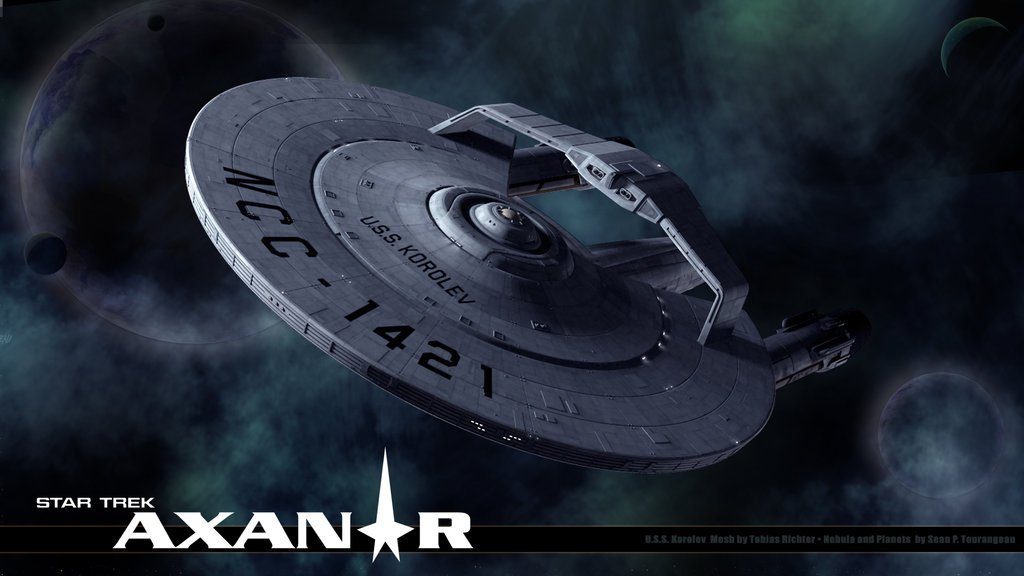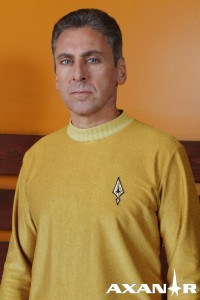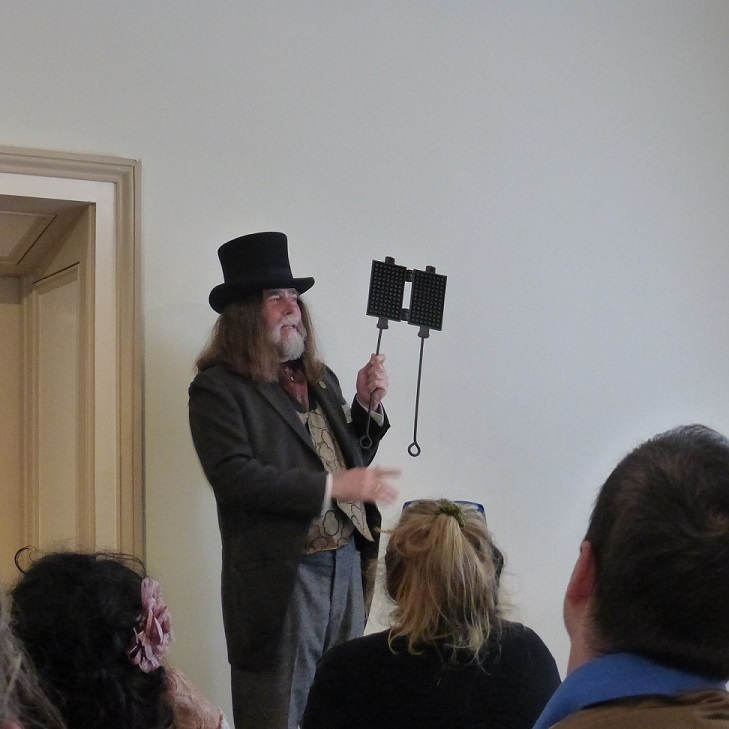 U.S. District Court Judge R. Gary Klausner on January 3 denied the motions for summary judgment by defendant Alec Peters of Axanar and plaintiffs CBS/Paramount, saying the issue of “subjective substantial similarity” needs to be decided by a jury. However, the judge ruled that the Axanar production company can’t claim fair use, and that there is an “objective substantial similarity” between the Axanar works and the studios’ copyrighted Star Trek works.
U.S. District Court Judge R. Gary Klausner on January 3 denied the motions for summary judgment by defendant Alec Peters of Axanar and plaintiffs CBS/Paramount, saying the issue of “subjective substantial similarity” needs to be decided by a jury. However, the judge ruled that the Axanar production company can’t claim fair use, and that there is an “objective substantial similarity” between the Axanar works and the studios’ copyrighted Star Trek works.
(Read the full decision here.)
Applying the law’s four-factor test, the court rejected Axanar’s claim that material it has drawn from the Star Trek universe is protected by the fair use doctrine. (Citations omitted.)
1. Purpose and Character of the Infringing Use
The first factor is “the purpose and character of the use, including whether such use is of a commercial nature or is for nonprofit educational purposes.” 17 U.S.C. § 107(1). This factor asks “whether and to what extent the new work is transformative,” in other words, whether the new work “adds something new, with a further purpose or different character, altering the first with new expression, meaning, or message,” or merely “supplant[s] the original.”
Defendants intentionally use or reference many elements similar to those in the Star Trek Copyrighted Works to stay true to Star Trek canon down to excruciating details. Viewed as a whole, the Axanar Works do not have “a further purpose or different character, altering the [Star Trek Copyrighted Works] with new expression, meaning, or message.”
On the other hand, Defendants want the Axanar Works to supplant the Star Trek Copyrighted Works. Peters “was interested in creating alternative ways for fans to view Star Trek.” He wanted to create “a whole new way that fans can get the content they want, by funding it themselves.” The Axanar Works are not transformative.
But the inquiry does not end here. An integral part of the first factor is determining “whether [the infringing] use is of a commercial nature or is for nonprofit educational purposes.” 17 U.S.C. § 107(1)
…Here, it is undisputed that the Defendants did not pay Plaintiffs for a license.
It is undisputed that Peters hoped to derive non-monetary benefits, for example, other job opportunities, from the Axanar Works…. The Axanar Works are commercial.
Defendants argue that the Axanar Works are not commercial because they are, and will be, distributed for free. This argument is unpersuasive because, even though Defendants do not profit directly from distributing the works, “common experience suggests that [Defendants] stood to gain at least indirect commercial benefit from the [viewership] boost which [they] had reason to hope would (and in fact did) result from the” Axanar Works. The successful fundraising campaign leveraging the popularity of Prelude is an example of such indirect benefit.
Defendants also argue that the Axanar Works are transformative because they are mockumentaries – fictions presented in a documentary form – a form of parody according to Wikipedia. For the purposes of copyright law, however, parody must use some elements of a prior work to create a new work that criticizes the substance or style of the prior work.…
Here, the Court has difficulty discerning from the Axanar Works any criticism of the Star Trek Copyrighted Works. This is not surprising since Defendants set out to create films that stay faithful to the Star Trek canon and appeal to Star Trek fans.
Thus, the Court finds that the first factor weighs in favor of Plaintiffs.
2. Nature of Copyrighted Work
The second factor, “the nature of the copyrighted work,” also weighs in favor of Plaintiffs. …The creativity in these Works and their status as published works are not disputed. They are the type of works that are given broad copyright protections.
3. Amount and Substantiality of the Portion Used
The third factor is “the amount and substantiality of the portion used in relation to the copyrighted work as a whole.” 17 U.S.C. § 107(3).
While it is difficult to quantify the amount of the portion used in relation to the Star Trek Copyrighted Works as a whole since “the portion” involves many recurring elements in the Star Trek universe and the Star Trek Copyrighted Works are numerous, it is fair to say that elements of the Star Trek Copyrighted Works pervade the Axanar Works. For example, every scene involving a Klingon or a Vulcan can conjure up Star Trek in the minds of fans. The same is true of Federation spaceships, Klingon battlecruisers, transporters, phasers, and so on. The elements from the Star Trek Copyrighted Works that Defendants use are qualitatively important because they give the Axanar Works the Star Trek feel and enable Defendants to stay true to the Star Trek canon. Thus, the third factor weighs in favor of Plaintiffs as well.
4. Effect of the Use upon the Potential Market
The fourth factor is “the effect of the use upon the potential market for or value of the copyrighted work.” 17 U.S.C. § 107(4).
Here, the prequel depicted in the Axanar Works is the kind of potential derivatives Plaintiffs “would in general develop or license others to develop.” Id. Plaintiffs have already developed a 2003 novel and licensed a role-playing game based at least in part on Garth of Izar and the Battle of Axanar from one episode of The Original Series….
Defendants’ attempt to treat the Battle of Axanar as a private little war is unpersuasive.
Defendants further argue that there is no evidence that the Axanar Works have acted as market substitutes to the Star Trek Copyrighted Works. However, this lack of evidence is understandable given the nature of the existing Axanar Works. Prelude is intended as a promotional piece to the feature-length Axanar Motion Picture. Prelude in that sense cannot be a market substitute of Star Trek television series or motion pictures, just as a trailer does not substitute for a feature-length film. The Axanar Motion Picture has not yet been made or released and its script is not yet released. Hence it cannot have any market impact. On the other hand, Defendants have successfully raised over a million dollars from Star Trek fans at Defendants’ prompting of funding the Axanar projects instead of “dumping hundreds or thousands of dollars a year on . . . cable channels” on which the Star Trek Copyrighted Works are shown. Peters “was interested in creating alternative ways for fans to view Star Trek” – the way to Eden perhaps. He wanted to create “a whole new way that fans can get the content they want, by funding it themselves.” Defendants used “a fully-professional crew – many of whom have worked on Star Trek itself – [to] ensure Axanar will be the quality of Star Trek that all fans want to see.” Peters also sought to distribute the Axanar Works on Netflix.… Defendants promoted an August 2015 draft of the script “the best Star Trek movie script ever!” on their Facebook page. Under these facts, Defendants evidently intend for their work to effectively function as a market substitution to the Star Trek Copyrighted Works. There is little doubt that “unrestricted and widespread conduct of the sort engaged in by [Defendants] would result in a substantially adverse impact [of market substitution] for the [Star Trek Copyrighted Works].”
…Thus, the Court finds that the fourth factor also weighs in favor of Plaintiffs.
Defendant Alec Peters has released an official response to the decision:
This morning, Judge Klausner made a ruling that the case will go to Jury Trial to determine if Axanar is “substantially similar” to the CBS copyrighted works. If it is, then the jury will have to find if the infringement is “willful” or “non-willful”, and Judge Klausner already stated that “Peters’ actions demonstrate a respect for Plaintiffs’ intellectual property that makes a finding of willfulness on summary judgement inappropriate.” If the jury does not find “substantial similarity” then the case will be dismissed.
Depending on the outcome of the trial, Axanar may choose to appeal the verdict to the Ninth Circuit, where Erin Ranahan is 5-0. The Ninth Circuit Court of Appeals is also known to favor artist rights.
So the story of Axanar continues…
More Reading: Carlos Pedraza of Axamonitor ends his excellent post about the decision by identifying all the judge’s subtle Star Trek quotes and references.



